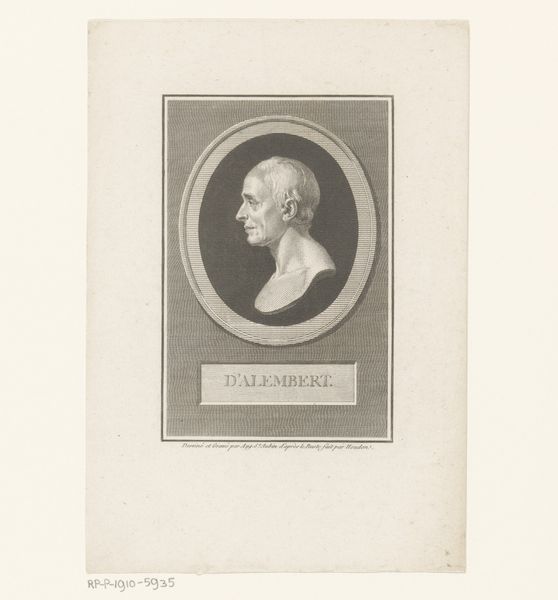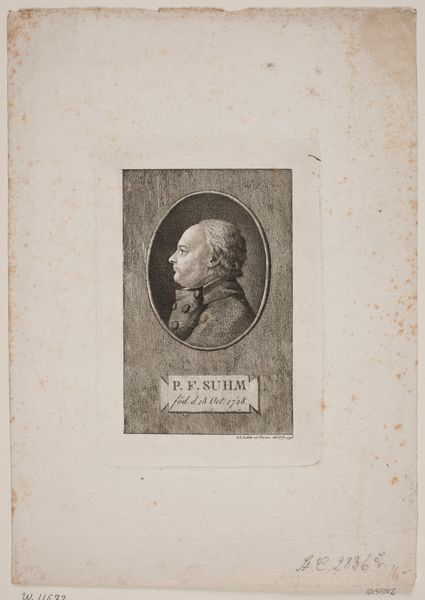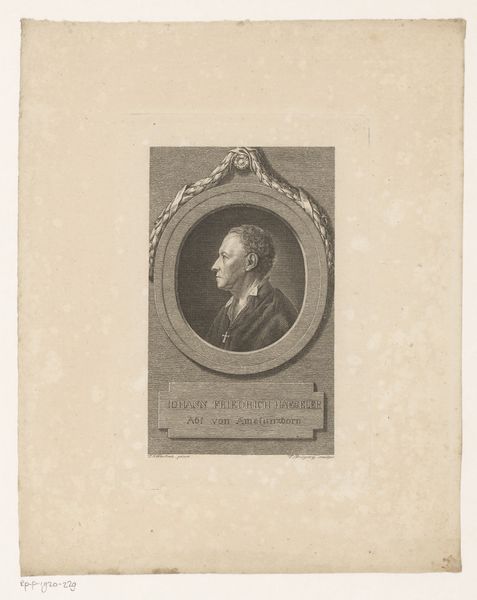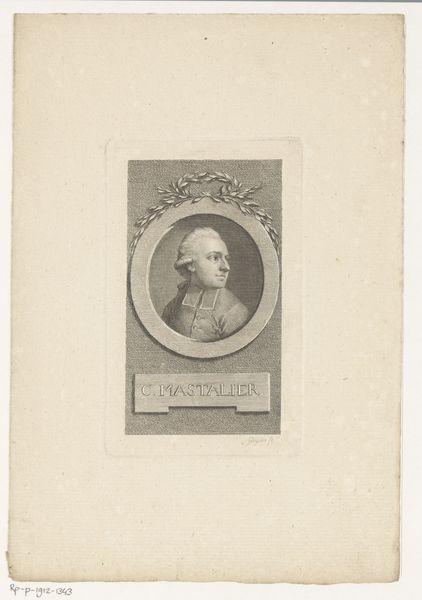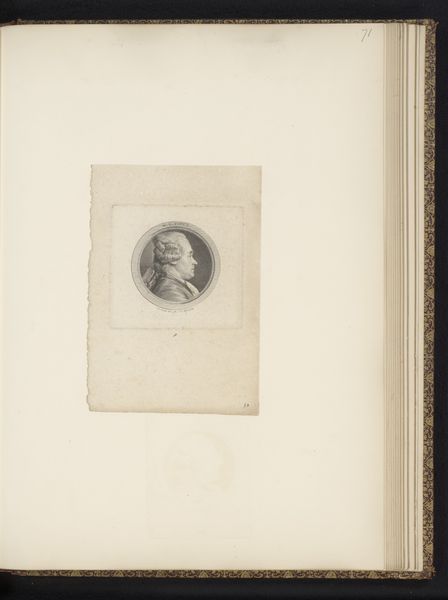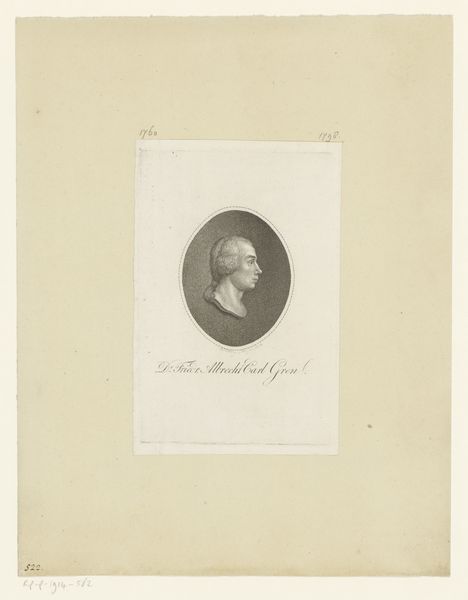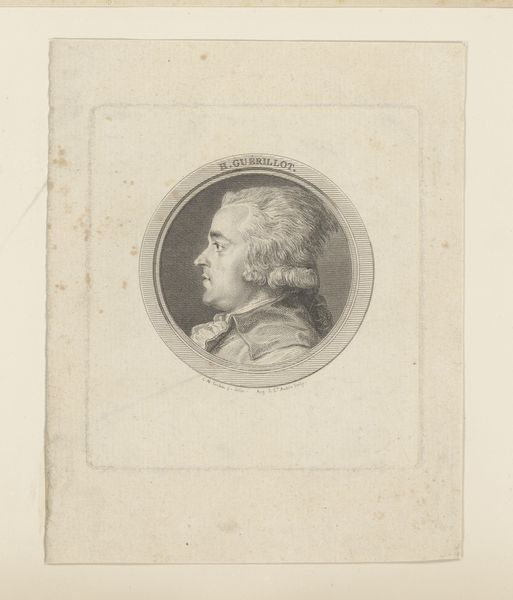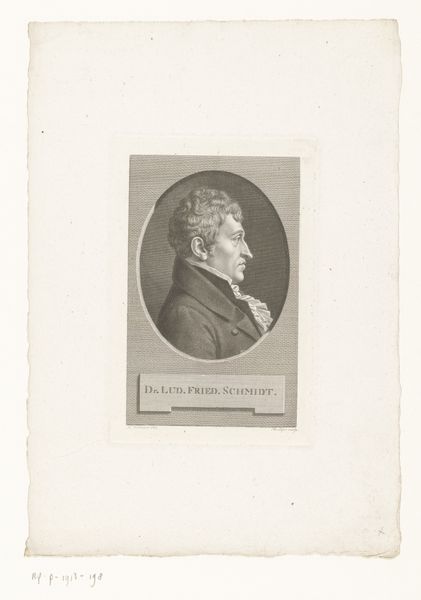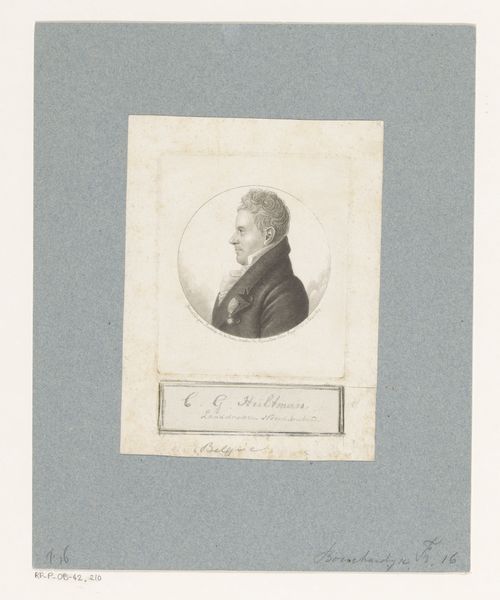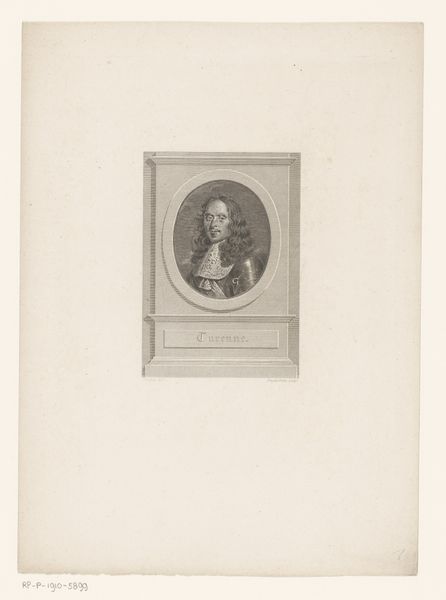
drawing, print, engraving
#
portrait
#
drawing
#
neoclacissism
# print
#
classical-realism
#
form
#
line
#
history-painting
#
engraving
#
realism
Dimensions: height 138 mm, width 88 mm
Copyright: Rijks Museum: Open Domain
Augustin de Saint-Aubin created this portrait of Homer in France using etching. The engraving, made in the late 18th century, reflects the neoclassical revival and its fascination with the ancient world. Homer, the legendary author of the Iliad and the Odyssey, was seen as the epitome of literary and cultural achievement. The formal rendering of the portrait, its clean lines and classical bust format, speaks to the institutional role of art academies in shaping artistic production. It underscores the conservative aesthetic values upheld by these institutions in that era. The image of Homer serves not only as a celebration of ancient Greek culture but also as a means to establish a lineage of cultural authority. By invoking the classical past, the French sought to legitimize their own cultural and political aspirations. Examining the prints and publications of the time can help us understand the social function of classical imagery in shaping cultural identity and power dynamics. Ultimately, art is contingent on the social and institutional contexts in which it is made.
Comments
No comments
Be the first to comment and join the conversation on the ultimate creative platform.
